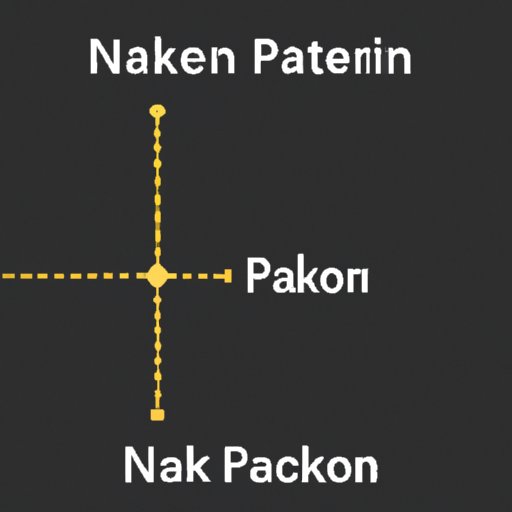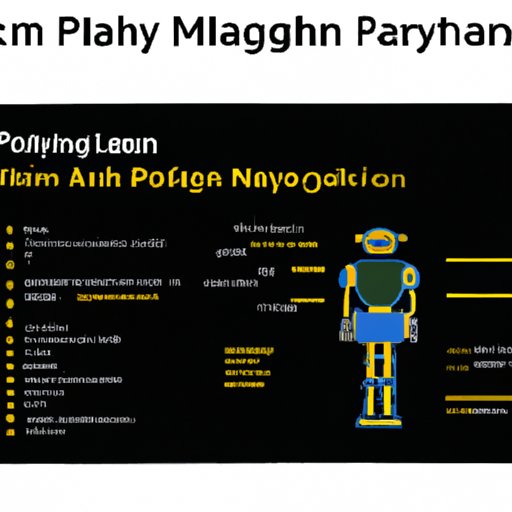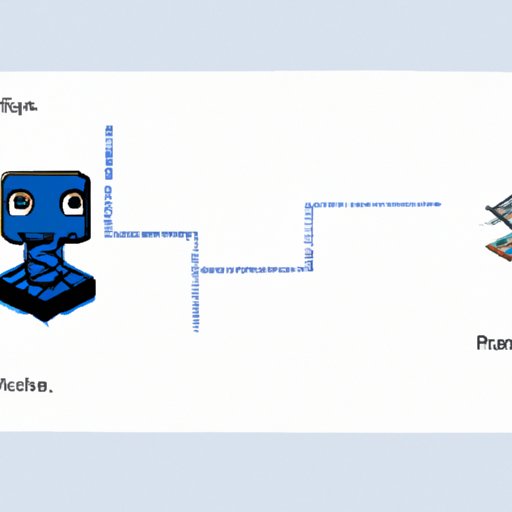Introduction
Artificial Intelligence (AI) is the ability of a machine or computer program to think and learn. It is a rapidly growing field of technology that has immense potential to revolutionize many aspects of our lives. AI can be used to automate mundane tasks, make more accurate predictions, and even replace humans in certain roles. As such, it is essential for developers to understand the fundamentals of AI and how to create AI programs in languages like Python.

Creating a Neural Network Using Python
A neural network is an AI architecture modeled after the human brain. It consists of interconnected nodes that process information and pass it along to other nodes. Neural networks are used for a wide variety of tasks, such as classifying images, predicting stock prices, and recognizing speech. In order to create a neural network in Python, you will need to install the TensorFlow library, which provides an easy-to-use interface for working with neural networks.
The components of a neural network include neurons, weights, biases, and activation functions. Neurons are the basic building blocks of a neural network and represent individual processing units. Weights are adjustable parameters that determine how much influence each input has on the output. Biases are constants that are added to the weighted sum of inputs before passing it through an activation function. Activation functions control the flow of data through the network by determining when neurons should fire.
Once these components have been set up, the next step is to configure the neural network. This involves setting the number of layers, the number of neurons per layer, and the type of activation function to use. Additionally, it is important to decide how the network will be trained. This can be done either manually or automatically using backpropagation algorithms.

Utilizing Machine Learning Algorithms in Python
Machine learning algorithms are a set of algorithms that are used to automatically identify patterns in data and make predictions. Popular algorithms include linear regression, support vector machines, and random forests. Each algorithm has its own strengths and weaknesses and is best suited for different types of problems. For example, linear regression is best used for predicting continuous values, while support vector machines are better suited for classification tasks.
In order to implement machine learning algorithms in Python, you will need to install the Scikit-learn library. This library provides a range of algorithms that can be easily implemented in Python. Additionally, it also provides tools for pre-processing data, such as feature selection and scaling, which can be useful for improving the accuracy of the models.
Building an AI-Powered Chatbot with Python
A chatbot is a computer program that is designed to simulate conversation with human users. It utilizes Natural Language Processing (NLP) to interpret user input and generate appropriate responses. Chatbots are becoming increasingly popular as they can provide customer service 24/7 and help reduce costs associated with human customer service agents.
The components of a chatbot include an NLP engine, a dialogue manager, and a database. The NLP engine interprets user input and breaks it down into smaller components that can be understood by the chatbot. The dialogue manager then takes this input and uses it to generate an appropriate response. Finally, the database stores user information so that the chatbot can keep track of conversations.
In order to build a chatbot in Python, you will need to install the ChatterBot library. This library provides a simple way to create interactive chatbots that can respond to user input. Additionally, the library includes a range of tools for training the chatbot, such as datasets and corpus readers.
Developing an AI Program for Image Recognition Using Python
Image recognition is the process of identifying objects in an image. It is an important task for AI as it enables computers to recognize and classify objects in photos or videos. Image recognition is used in a variety of applications, such as facial recognition and autonomous vehicles.
The components of an image recognition program include a convolutional neural network, a dataset of labeled images, and an image recognition library. A convolutional neural network is used to identify objects in an image. The dataset of labeled images is used to train the network and teach it how to recognize objects. Finally, the image recognition library is used to access the convolutional neural network and perform image recognition tasks.
In order to create an image recognition program in Python, you will need to install the OpenCV library. This library provides a range of tools for performing image recognition tasks, such as object detection and face recognition. Additionally, it also provides tools for pre-processing images, such as resizing and cropping.

Designing an AI Game Bot with Python
A game bot is a computer program that is designed to play games autonomously. It is able to analyze the game state and make decisions based on the available information. Game bots are used to test the balance of a game and can even be used to compete against human players.
The components of a game bot include an AI engine, a game state analyzer, and a decision-making module. The AI engine is responsible for analyzing the game state and making predictions about future moves. The game state analyzer is used to extract relevant information from the game state. Finally, the decision-making module is responsible for selecting the best move based on the predictions made by the AI engine.
In order to design and develop a game bot in Python, you will need to install the PyGame library. This library provides a range of tools for designing and developing game bots, such as sprite classes and event handlers. Additionally, it also provides tools for creating graphical interfaces, such as text boxes and buttons.
Crafting an AI-Powered Decision-Making System in Python
A decision-making system is a computer program that is designed to make decisions autonomously. It is able to analyze data and make decisions based on the available information. Decision-making systems are used in a variety of fields, such as finance, healthcare, and robotics.
The components of a decision-making system include a knowledge base, a rule-based system, and a decision tree. The knowledge base stores information about the problem domain. The rule-based system is used to define rules that govern how decisions should be made. Finally, the decision tree is used to determine the best course of action based on the available data and the rules defined in the rule-based system.
In order to create an AI-powered decision-making system in Python, you will need to install the Scikit-learn library. This library provides a range of machine learning algorithms that can be used to develop decision-making systems. Additionally, it also provides tools for evaluating the performance of the system, such as cross-validation and metrics.
Conclusion
This article provided an overview of how to create Artificial Intelligence (AI) using Python. We discussed creating neural networks, utilizing machine learning algorithms, building AI-powered chatbots, developing AI programs for image recognition, designing AI game bots, and crafting AI-powered decision-making systems. With the right tools and knowledge, developers can create powerful AI programs in Python.
It is clear that AI is here to stay and that it will continue to revolutionize many aspects of our lives. As such, it is important for developers to understand the fundamentals of AI and how to create AI programs in languages like Python. With the right tools and knowledge, developers can create powerful AI programs in Python.
(Note: Is this article not meeting your expectations? Do you have knowledge or insights to share? Unlock new opportunities and expand your reach by joining our authors team. Click Registration to join us and share your expertise with our readers.)
